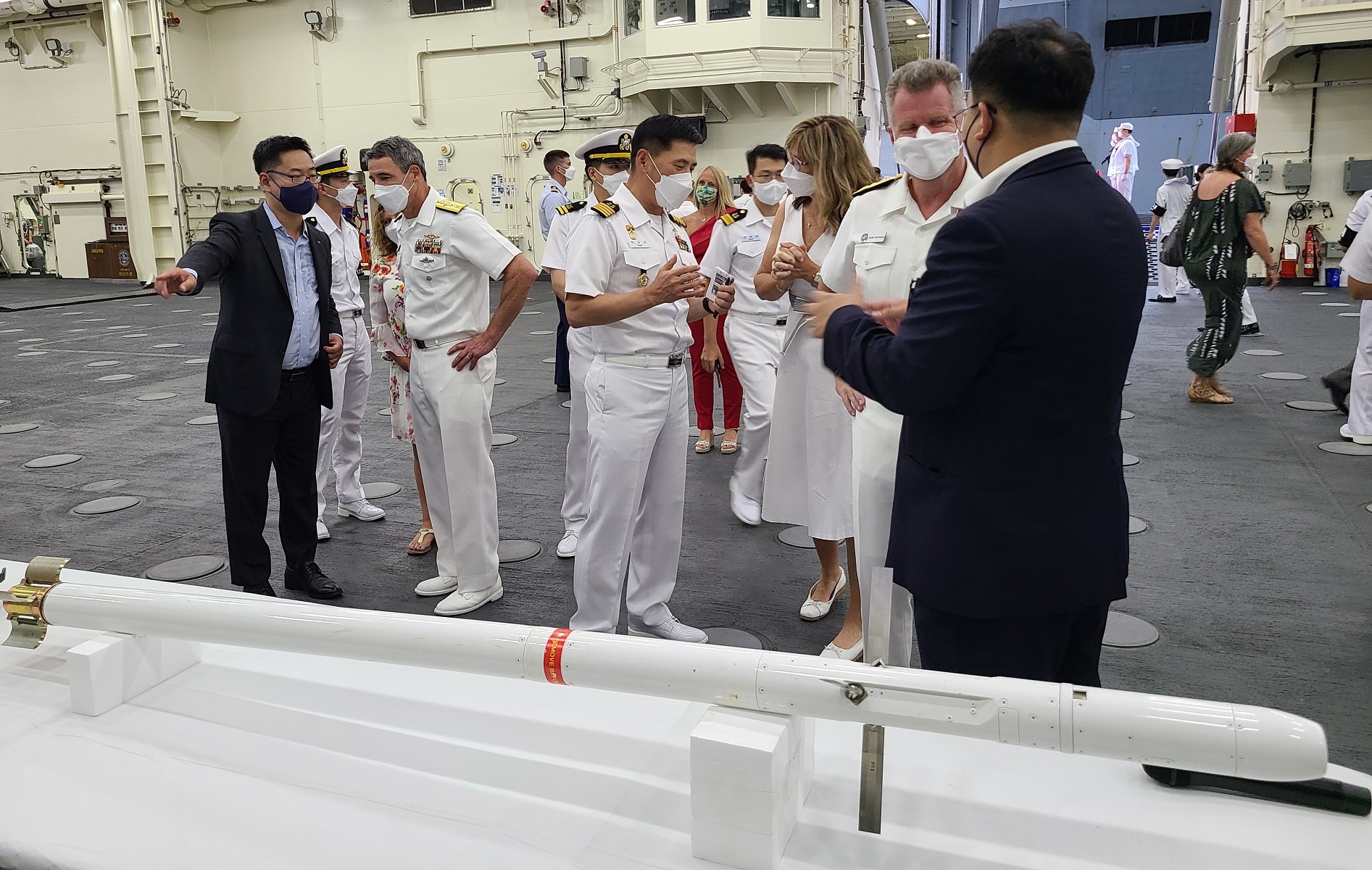South Korean defense company LIG Nex1 is revealsing its “Poniard” (Bigung) Korean-Low cOst Guided Imaging Rocket (K-LOGIR) at Rim of the Pacific (RIMPAC) 2022. The Low-Cost Guided Imaging Rocket was a weapons system under development for the US Navy as part of ONR’s Low-Cost Imaging Terminal Seeker (LCITS) FNC. It transitioned as the weapon used in the Medusa Joint Capability Technology Demonstration with South Korea. LOGIR is especially effective against swarm attacks by enemies like small boats, as there’s no need for ongoing guidance. The program provided a precision guided 2.75 inch (70 mm) rocket for use with existing Hydra 70 systems in service, as such it has many similarities with the Advanced Precision Kill Weapon System program.

The Defense Acquisition Program Administration (DAPA) announced that South Korea’s Bigung (Poniard) guided rocket system has passed a comparative test by the U.S. Department of Defense’s (DoD’s) Foreign Comparative Testing (FCT) for foreign weapons, paving the way for exports to the U.S. market. The Bigung, which has now the become the first such South Korean system to pass the Pentagon’s FCT, has a ‘fire-and-forget’ capability, a stated maximum range of 8 km, and can carry a total of 36 rockets in two separate launchers (18 rockets in each launcher). The weapon system hit all 10 designated targets and met all US requirements during an FCT session held in South Korea in October 2019 that was attended by US DoD experts. The Bigung is essentially a mobile coastal defense system developed by the Agency for Defense Development and South Korean defence company LIG Nex1.

The 70 mm (2.75 inch) guided rocket system is directed at countering Fast Inshore Attack Craft (FIAC), landing craft and landing vehicles of the DPRK (North Korea). As operated by the Republic of Korea Marine Corps (RoKMC), the Bigung is integrated into a 6×6 Kia KM250 military truck that is equipped with the necessary target detection and launch control systems. At ADEX 2017, Republic of Korea Marine Corps was showcasing the Bigung system for the very first time. The principal difference between the systems is that while APKWS uses terminal laser homing, requiring the target to be ‘painted’ until impact, LOGIR would guide to a position supplied by the launching aircraft, using imaging infrared in the terminal phase making it a true fire-and-forget weapon.

The Low-Cost Guided Imaging Rocket (LOGIR) was a weapons system under development for the US Navy as part of ONR’s Low-Cost Imaging Terminal Seeker (LCITS) FNC. The South Korean version, designated K-LOGIR developed by by the South Korean company LIG Nex1 based on the well-known Hydra 70-mm unguided rocket. The guided rocket has a weight below 17.5 kg (39 lb) and a length of 1.9 m (6.2 ft) with range greater than 8 km (5.0 mi) with the (Low-Cost Imaging Terminal Seeker (LCITS) using imaging infra-red (IIR) imaging technology with an additional low-cost inertial correction unit. TADS (Target Acquisition & Designation System) acquires target data in all light conditions. Fire control system is operable for multi-targets.















